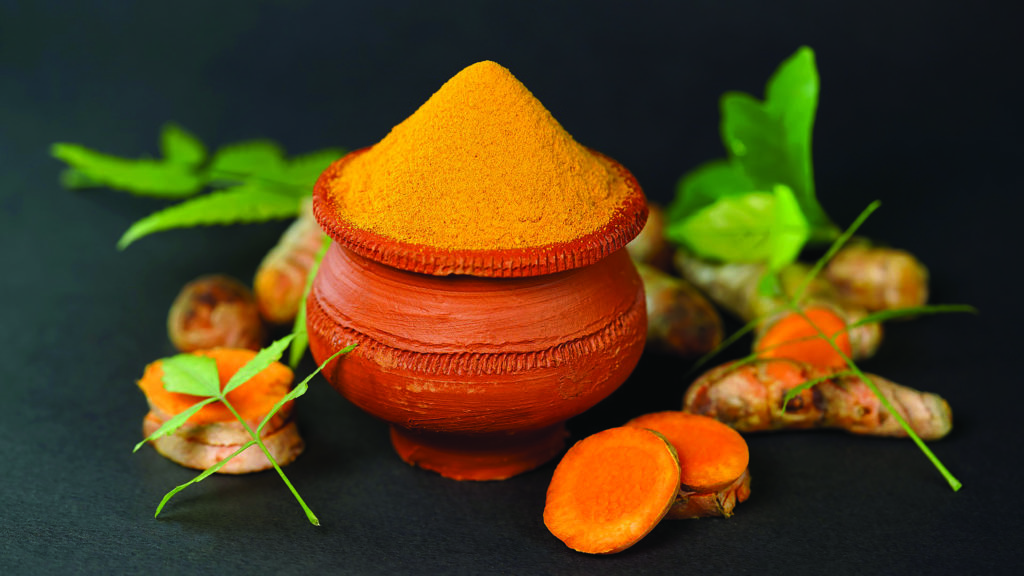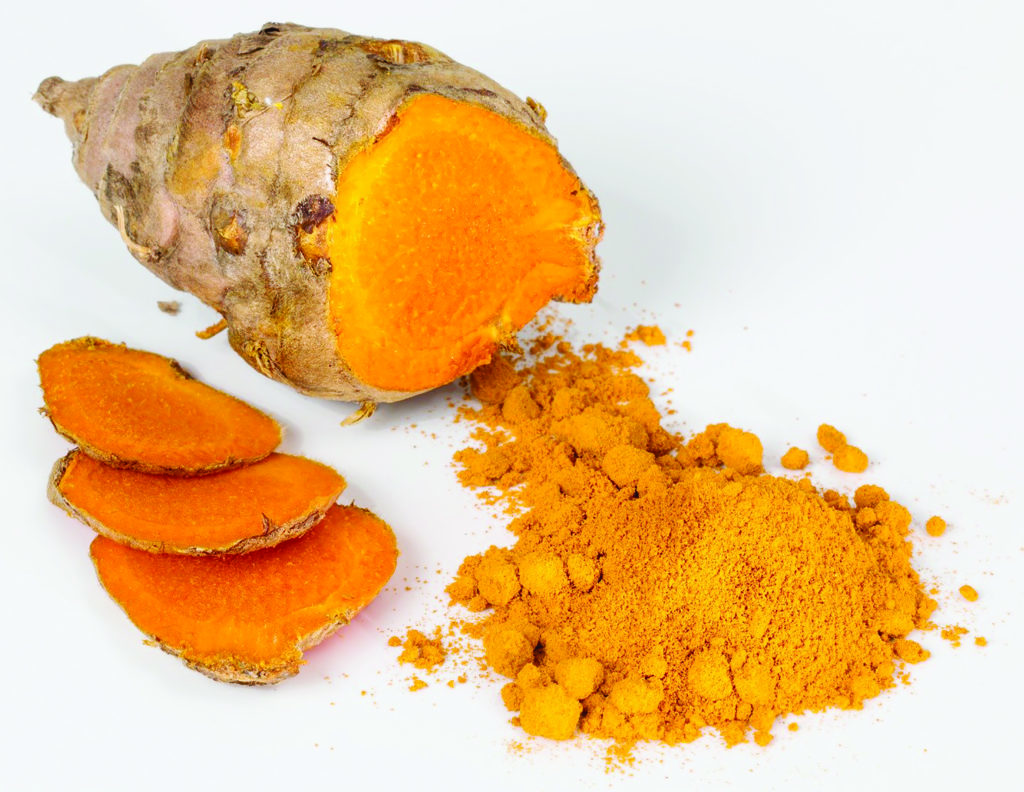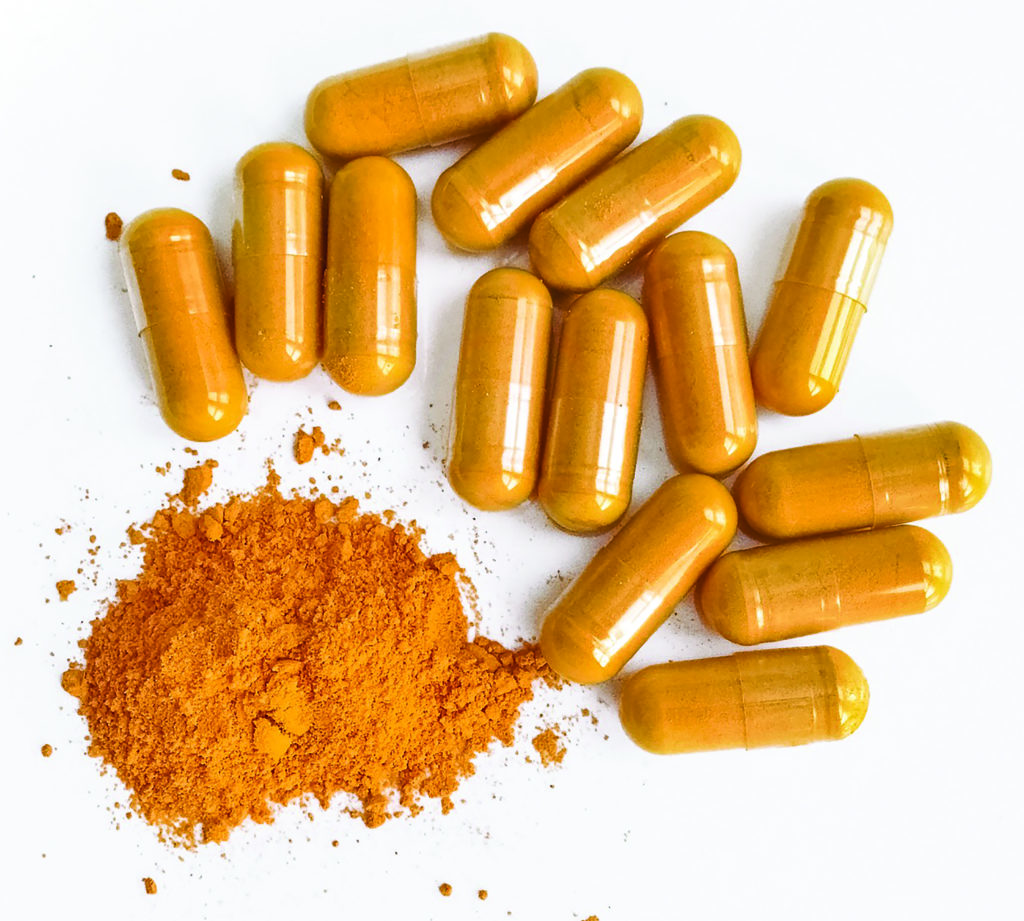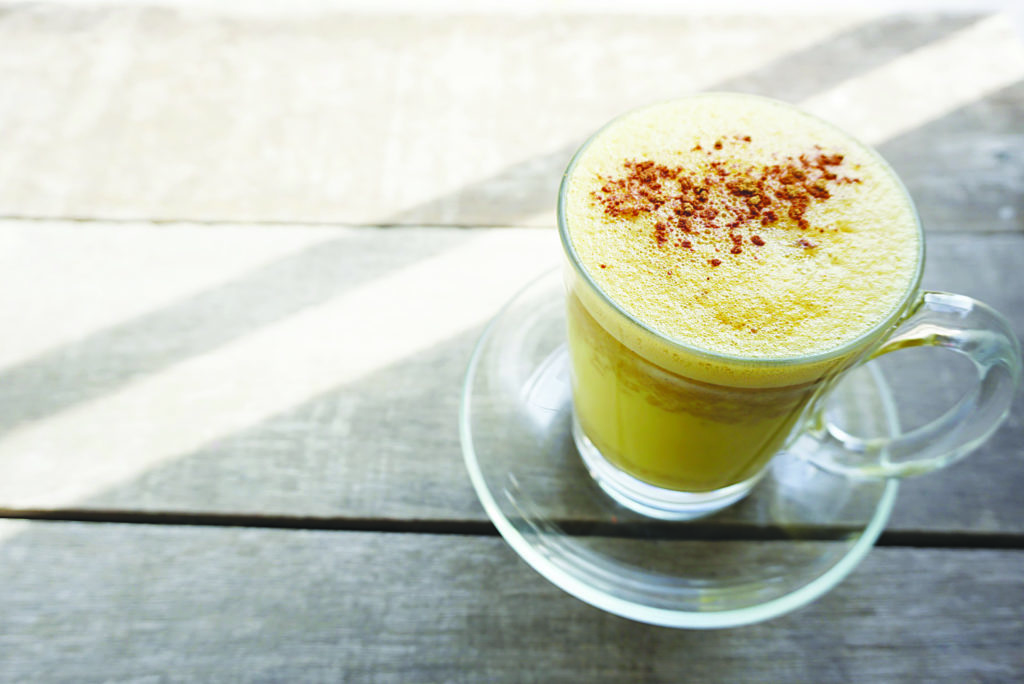Turmeric

Turmeric is a flowering plant native to the Indian subcontinent and Southeast Asia. It requires temperatures between 20 and 30 ‘C and a considerable amount of rain in order to thrive. The spice that comes from the turmeric plant is often referred to as Indian saffron or “The Golden spice.”

Turmeric or Curcuma longa is a relative of gingerand its vivid orange spice is commonly used in Asian food as the main spice in curry. It has a warm, bitter taste, a black pepper-like flavor and earthy, mustard-like aroma and is used to flavour and colour powders, mustards, butters, and cheeses.
The root of turmeric is traditionally used in Ayurvedic and Chinese medicine. It’s active ingredient, a yellow-colored chemical called Curcumin, has powerful biological properties. For centuries it has been used to treat inflammatory conditions, skin diseases, wounds, digestive ailments, and liver conditions. It has also been used to treat breathing problems and of late turmeric has been touted as a superfood that can fight cancer, ease depression, and more.
Western medicine has begun to study turmeric as a pain reliever and healing agent for conditions involving pain and inflammation, such as osteoarthritis. It is also used to treat hay fever, and to help reduce high cholesterol. Some people even use turmeric for heartburn, inflammatory bowel disease, stress, depression and as an aid to memory.
The chemical Curcumin found in turmeric can also help fight inflammation and keep blood sugar levels steady, making it a useful tool in the treatment of type 2 diabetes. In fact one study followed 240 adults with prediabetes and found that taking a curcumin supplement over 9 months lowered their odds of developing diabetes.
The Arthritis Foundation also cites several studies in which turmeric has reduced inflammation especially with arthritis in the joints. The foundation suggests taking turmeric capsules of 400 to 600 milligrams up to three times per day for inflammation relief.
Turmeric has been getting attention recently because of its antioxidant abilities. As there is a suggestion that its antioxidant effect is so powerful that it may stop your liver from being damaged by toxins. This could be good news for people who take strong drugs for diabetes or other health conditions that might hurt their liver with long-term use. Some people claim that putting a turmeric mask on their skin or eating turmeric will help fight stubborn pimples — perhaps because of the spice’s reported antibacterial and anti-inflammatory properties.

Curcumin also shows promise as a cancer treatment with studies suggesting it has protective effects against pancreatic cancer, prostate cancer, and multiple myeloma. In lab and animal studies, turmeric has stopped the growth of tumor cells, helped detoxifying enzymes work better, and more.
Curcumin may also help you to fight off a variety of viruses, including herpes and the flu, so therefore possibly beneficial in warding off COVID 19 symptoms..
A recent study found that turmeric can help ward off heart attacks in people who have had bypass surgery. Also people with Alzheimer’s who have chronic inflammation, found the natural anti-inflammatory effects of turmeric to help combat this. The spice is well known for its ability to ease joint pain, stiffness, and inflammation and early research has found it can help improve IBS symptoms such as abdominal pain.
Turmeric is also being studied as a treatment for diseases like Crohn’s and ulcerative colitis.Since it is also a relative of ginger, a well-known natural headache remedy, it’s no surprise that turmeric also gets recommended as a headache treatment, especially for migraines.

You can choose to take turmeric in food or as a tea or in a turmeric latte. Be warned though the yellow colour can get everywhere and stains easily.
Therefore you might just find it more convenient to take the extract in capsule for,. Here in Thailand these are readily available not only from pharmacy and health food stores but even in convenience shops such as 7/11.
